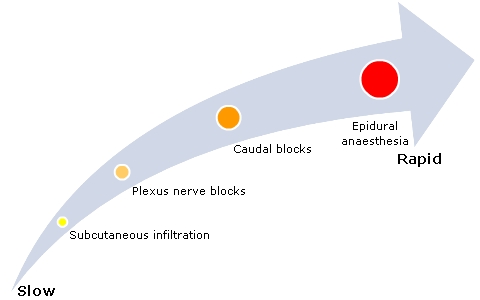Three Factors
There are three factors that affect the development of systemic local anaesthetic toxicity
The LA drug used
Bupivacaine (Marcaine) is more potent and also more dangerous than lidocaine in the event of overdose.
Rapid intravenous administration of bupivacaine will cause fatal ventricular fibrillation.
Pregnant patients are more sensitive to bupivacaine toxicity.
Cardiac resuscitation is more difficult with bupivacaine toxicity, and acidosis and hypoxia potentiate the cardiotoxicity of bupivacaine.
The route of administration
The most dangerous route would be accidental intravenous or intra arterial injection.
The toxicity also relates to how quickly the drug reaches the blood
stream from the site where it has been injected. 
Adrenaline is added to LA drugs for some nerve blocks to prolong their duration of action. This causes significant vasoconstriction which can reduce systemic absorption by up to 50% and for some agents, e.g. lignocaine, increase the recommended maximum dose.
The health of the patient
Patients who are unwell are more likely to show signs and symptoms of local anaesthetic toxicity early compared to healthy patients.
Acidosis worsens systemic local anaesthetic toxicity because it causes more of the drug to remain in the circulation.